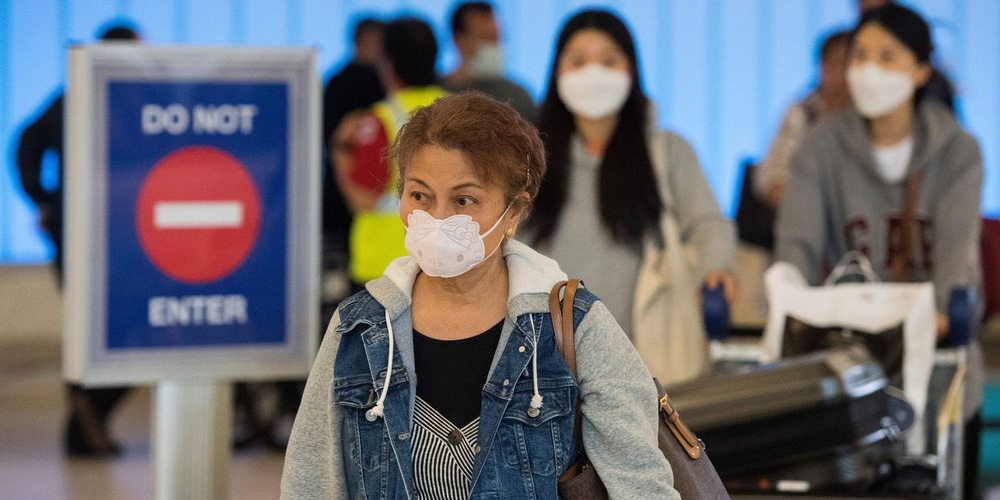
The mortality rate because of this virus is probably about or even less than 1%. With the confirmed cases reported at China, 80% had fairly mild symptoms (defined as no significant infection in the lungs). About 15% had severe symptoms that caused significant shortness of breath, low blood oxygen or other lung problems, and fewer than 5% of cases were critical.
In the outbreak in USA it was noted that 31-70% of adults of ages 85 years & older and
31-59% of adults of ages between 65-84 years needed hospital. Whereas 6-29% of adults 85 years old and older and 11-31% of adults 65-84 years old were admitted in intensive care for treatment
Who are at Risk?
People with older ages with less immunity or people underlying with serious medical conditions like heart patients, Diabetics, Lung diseases or severe asthma are at more risk. In USA studies indicates that most deaths have been for the people over 65 years of age. Diabetes, emphysema and heart problems were among the pre-existing conditions that some people suffered before they were diagnosed with corona virus.
Known Symptoms:
Reported illnesses have ranged from mild symptoms to severe illness. The symptoms that may appear within 2-14 days after exposure are Fever, Cough, Shortness of breath, fatigue and muscle aches. A runny nose and sore throat are far less common, reported by just 5% of patients.
Emergency warning signs for which immediate medical attention should be seek could be Difficulty in breathing or shortness of breath, Persistent pain or pressure in the chest, confusion or inability to arouse, Bluish lips or face.
How the Virus spreads:
Most infections happen in families, where people come in close contact. You need to be within one to two meters (3 to 6 ft) of somebody to be infected by viral-loaded water droplets from their coughs or when they are speaking. The tests show that when the virus is carried by the released droplets, it remains viable, or able to still infect people, in aerosols for at least three hours. Since this is less likely in public transport, therefore the government imposes restrictions in public transport.
it would also be possible to pick up the virus on your hands from a surface that somebody with the infection had touched. The virus can linger for 48 hours or even possibly 72 hours on a hard surface, such as the hand rail in the bus or public places, though less time on a soft surface. That is why the advice is to wash your hands regularly and avoid touching your face, to prevent the virus getting into your nose, mouth or eyes if your hands are infected.
Through a series of recent experiments, researchers tracked the virus’ viability on different surfaces, discovering that its half-life covers a wide range of time periods. On copper, for instance, the virus survived just four hours. But on some surfaces, its longevity was much greater — lasting for up to one day on cardboard, and up to two or three days on plastic and stainless steel. And when it came to aerosols, the virus lasted for three hours after being sprayed. In terms of half-life, the research team found that it takes about 66 minutes for half the virus particles to lose function if they are in an aerosol droplet. That means that after another hour and six minutes, three quarters of the virus particles will be essentially inactivated but 25% will still be viable.
Actions to reduce your risk of getting sick
The best way to prevent illness is to avoid being exposed to this virus
Prepare your own SOP’s according to your environment and family
If you are at higher risk for serious illness from COVID-19 because of your age or
because you have a serious long-term health problem, it is extra important for you to take actions to reduce your risk of getting sick with the disease.
Take everyday precautions to keep space between yourself and others.
Avoid crowds and all non-essential travels as much as possible. If you have to go out in public, keep away from others (You do not know who are sick), limit close contact especially in poorly ventilated spaces and places at closed-in settings with little air circulation wash your hands often.
To the extent possible, avoid touching high-touch surfaces in public places, like
elevator buttons, door handles, handrails, handshaking with people, etc. Use a tissue or your sleeve to cover your hand or finger if you must touch something.
Avoid touching your face, nose, eyes, and mouth, etc. with unwashed hands before disinfecting or washing
Wash your hands after touching surfaces in public places. Make it habitual to
disinfect through hand sanitizer while entering your home or wash it thoroughly with soap for 20 seconds before touching any item at home
Wash your hands often with soap and water for at least 20 seconds especially after you have been in a public place or after blowing your nose, coughing, or sneezing.
If soap and water are not readily available, use a hand sanitizer that contains at least 60% alcohol. Cover all surfaces of your hands and rub them together until they feel dry.
Restrict the visiting of personals at your home to very essential level. Try to do much of your works, staying at home with your own, rather inviting people to do
the work at your home.
You are not aware if any visiting person can bring some infection to your home
which may latter make you sick. Clean and disinfect frequently touched
surfaces daily. This includes tables, doorknobs, light switches, countertops, handles, desks, phones, keyboards, toilets, faucets, sinks and seating places
If surfaces are dirty, clean them: Use detergent or soap and water prior to disinfection.
Most common household disinfectants will work. Use disinfectants appropriate for the surface. For diluting your household bleach, mix 5 tablespoons (1/3 cup) of bleach in one gallon of water. One gallon of water is equal to 3.78 liters. Approximately 4 normal glasses make one liter.
If you are NOT sick: You do not need to wear a facemask unless you are caring
for someone who is sick (and they are not able to wear a facemask). Facemasks may be in short supply and they should be saved for caregivers.
Things you can do to support yourself
Take breaks from watching, reading, or listening to news stories and social media. Hearing about the pandemic repeatedly can be upsetting.
Take care of your body. Take deep breaths, stretch, or meditate. Try to eat
healthy, well-balanced meals, exercise regularly, get plenty of sleep
Make time to unwind. Try to do some other activities you enjoy.
Actions you must take if you are sick or become infected
You should wear a facemask when you are around other people (e.g., sharing a room or vehicle) and before you enter a healthcare center. If you are not able to wear a facemask (for example, because it causes trouble breathing), then you should do your best to cover your coughs and sneezes, and people who are caring for you should wear a facemask if they enter your room
Cover your mouth and nose with a tissue when you cough or sneeze or use the inside of your elbow.
Throw used tissues in the trash.
Immediately wash your hands with soap and water for at least 20 seconds. If soap and water are not readily available, clean your hands with a hand sanitizer
that contains at least 60% alcohol.
Stay home if you are sick, except to get medical care. People who are mildly ill
with COVID-19 are able to recover at home. Do not leave, except to get medical care. Do not visit public areas
Stay in touch with your doctor. Call before you get medical care. Be sure to get
care, if you feel worse or you think it is an emergency
Avoid using public transportation, ride-sharing, or taxis.
Separate yourself from other people in your home; this is known as home isolation. As much as possible, you should stay in a specific “sick room” and away from other people in your home. Use a separate bathroom, if available.
Connect with others through telephonic conversations, especially with people you trust and they show concerns about you and your feelings.
Cleaning of visibly dirty surfaces followed by disinfection is a best practice measure for prevention and spreading of COVID-19 and other viral respiratory illnesses in households and community settings
Wear disposable gloves when cleaning and disinfecting surfaces. Gloves should
be discarded after each cleaning. If reusable gloves are used, those gloves should be dedicated to cleaning and disinfection of surfaces for COVID-19 and should not be used for other purposes.
Household members should clean hands often, including immediately after
removing gloves and after contact with an ill person, by washing hands with soap and water for 20 seconds. If soap and water are not available and hands are not visibly dirty, an alcohol-based hand sanitizer that contains at least 60% alcohol may be used. However, if hands are visibly dirty, always wash hands with soap and water.
Further fighting actions:
Steam therapy, or steam inhalation, involves inhaling water vapor to open the airways and help the lungs drain mucus. steam adds warmth and moisture to the air, which may improve breathing and help loosen mucus inside the airways and lungs. Inhaling water vapor can provide immediate relief and help people breathe more easily
Green tea contains many antioxidants that may help reduce inflammation in the
lungs. These compounds may even protect lung tissue from the harmful effects of smoke inhalation.
Inflammation of the airways can make breathing difficult and cause the chest to feel heavy and congested. Eating anti-inflammatory foods can reduce inflammation to relieve these symptoms. Foods that help fight inflammation includes, turmeric, leafy greens, cherries, blueberries, olives, walnuts, beans, lentils
Author: Shah Muhammad Tanweer
He is an Environmentalist with a Masters’s degree in Environmental Engineering from Neduet.
Read More News On
Catch all the Pakistan News, Breaking News Event and Latest News Updates on The BOL News
Download The BOL News App to get the Daily News Update & Follow us on Google News.



